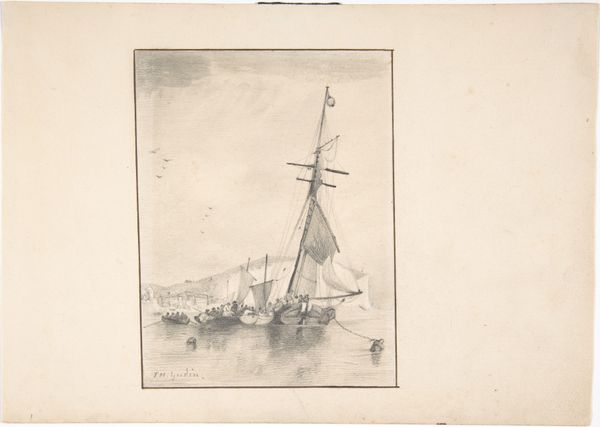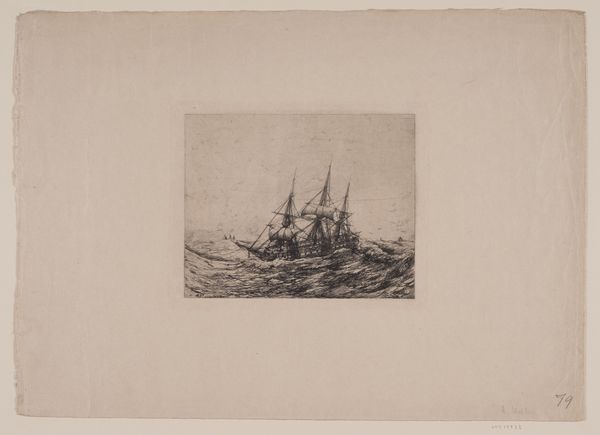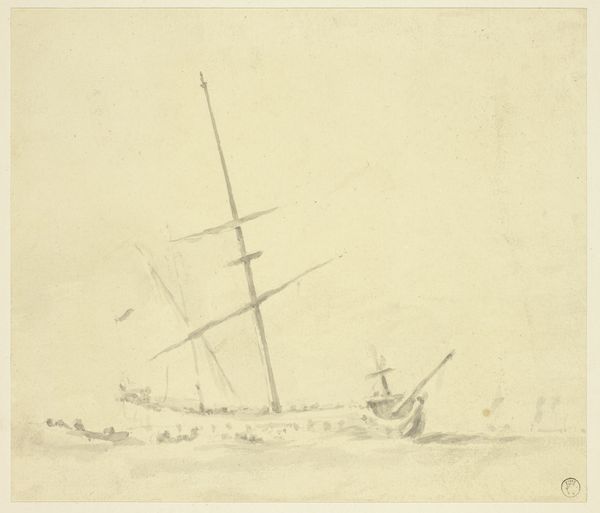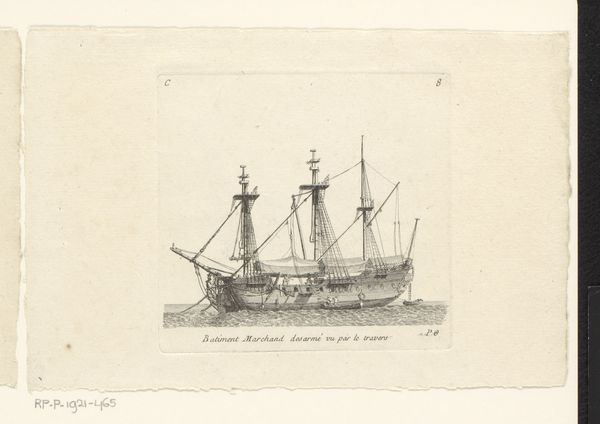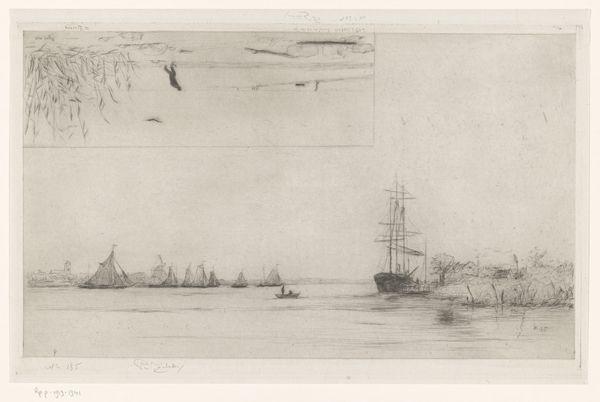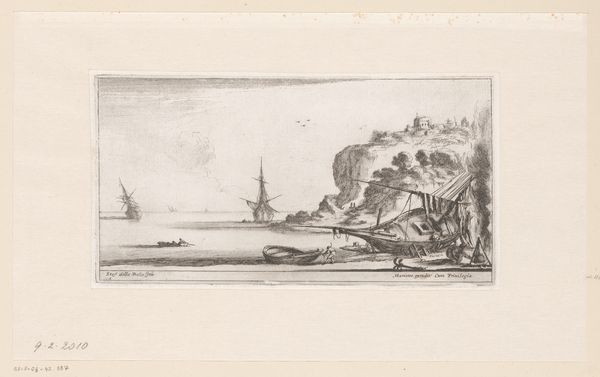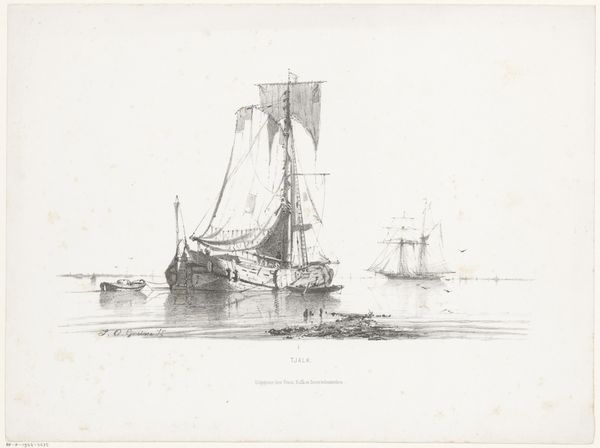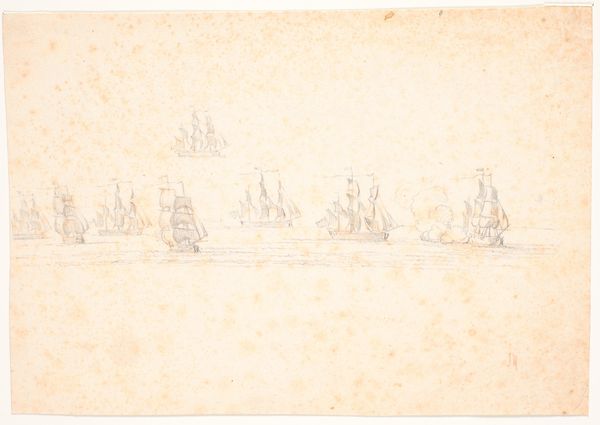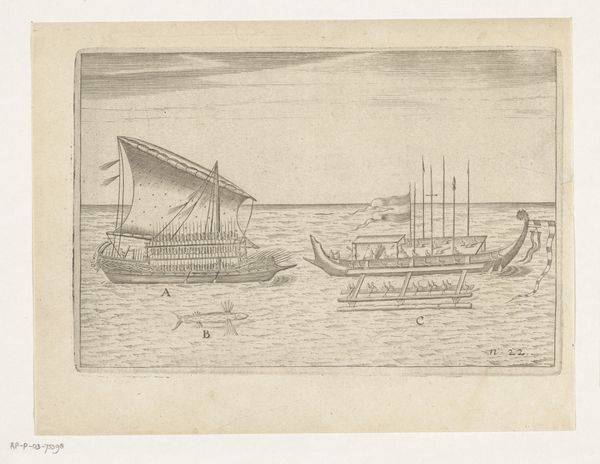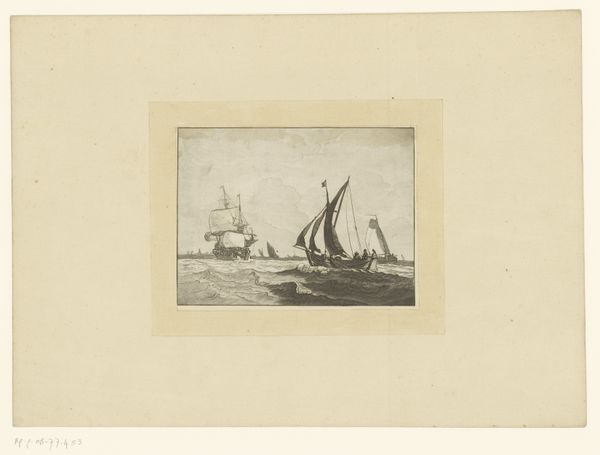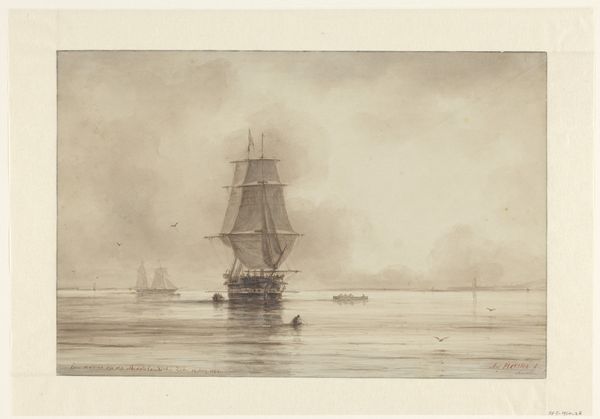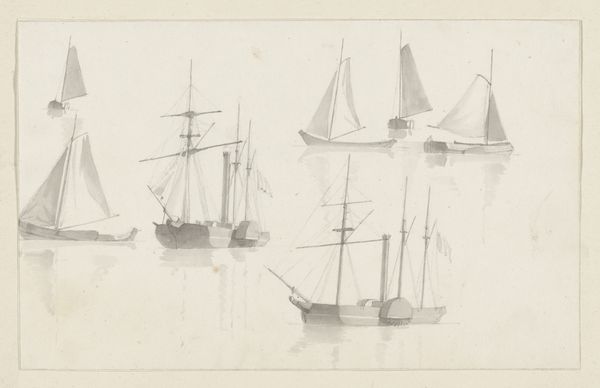
drawing, pencil
#
pencil drawn
#
drawing
#
light pencil work
#
pencil sketch
#
landscape
#
pencil
#
sketchbook drawing
#
pencil work
#
realism
Dimensions: height 113 mm, width 218 mm
Copyright: Rijks Museum: Open Domain
Editor: This pencil drawing, "Driemaster, voor anker liggend," which translates to "Three-master, lying at anchor" from 1884 by Carl Bloch, has such a still and peaceful mood. There's an almost dreamlike quality in its realism. As a historian, what stands out to you about this particular piece? Curator: Given Bloch’s primary association with religious art and history paintings commissioned for the Royal Chapel, his landscapes provide insight into the institutional contexts that underpinned artistic production in 19th century Europe. Bloch found success with powerful figures of the church. How does a landscape by such a figure disrupt what you expect, or confirm existing assumptions, about that period? Editor: Well, seeing him depict something so ordinary, these ships in the harbor... it makes me wonder what he found valuable outside the narratives he usually portrayed. It humanizes him in a way I didn’t expect. Was there a market for these types of drawings at that time? Curator: Precisely. Consider the burgeoning art market; the increasing popularity of 'plein air' sketching. Drawings such as these might have circulated among a different, perhaps bourgeois, clientele than his larger, formal works. How does understanding the socio-economic landscape influence your perception of its artistic value, beyond pure aesthetics? Editor: I see. Knowing it was made for a specific market, not just personal expression, definitely changes how I see it. It becomes less of a private moment and more of a calculated move. Curator: Indeed. And remember, institutions, patrons, and public taste profoundly shaped artists' choices then as now. Appreciating these drawings is not simply about aesthetic judgement. It's about interrogating the structures which permitted this kind of quiet scene from an artist better known for grand religious tableaux. Editor: It’s like peeling back another layer of understanding. This conversation made me aware of how the art world affects what artists create, beyond just personal inclination. Curator: Exactly! Context matters. Understanding those contexts brings you closer to seeing art for what it really is.
Comments
No comments
Be the first to comment and join the conversation on the ultimate creative platform.
